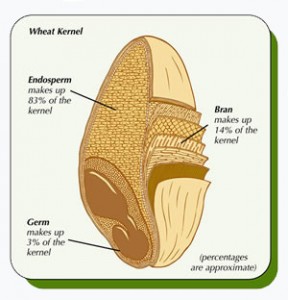 Confused? You’re not alone. “How do I tell if it’s whole grain?” is a question I get asked all of the time. Whole grains are the place we really fall short. According to the government’s new dietary guidelines, the average American is getting, on average, only about 15% of the amount that we need.
Confused? You’re not alone. “How do I tell if it’s whole grain?” is a question I get asked all of the time. Whole grains are the place we really fall short. According to the government’s new dietary guidelines, the average American is getting, on average, only about 15% of the amount that we need.
According to the FDA, whole grains are “cereal grains that consist of the intact and unrefined, ground, cracked or flaked fruit of the grains whose principal components — the starchy endosperm, germ and bran — are present in the same relative proportions as they exist in the intact grain.” Examples include barley, buckwheat, bulgur, corn, millet, rice, rye, oats, sorghum, wheat and wild rice.
Got that??? In other words, whole grains are intact grains: they haven’t had their bran and germ removed through the milling process. This makes them good sources of fiber and keeps the naturally occurring vitamins and minerals from being removed.
What Is Refined Grain and Flour?
Refined grains have been processed to remove the bran and germ. Flour made from refined grains produces baked goods with a softer texture and a longer shelf life. But fiber, iron, vitamins, and minerals have also been removed during the milling process.
White flour, which is made from a refined grain, has had both the bran and germ removed. To make it enriched flour, which you find quite frequently, nutrients are added back in to make up for the ones lost in processing. The amount of nutrients are regulated by the FDA. Because flour is enriched does not mean that it is whole grain.
How To Tell If Your Bread Is Whole Grain
- Always check the ingredients label, not just the front of the package
- Look for the word “whole” as in “whole grain,” “whole meal,” or “100% whole wheat”
- Check that whole grains are included in the first items in the ingredient list
- Aim for products with at least 3 grams of dietary fiber per serving
- Descriptive words like stone-ground, multi-grain, 100% wheat, or added bran don’t necessarily mean whole grain